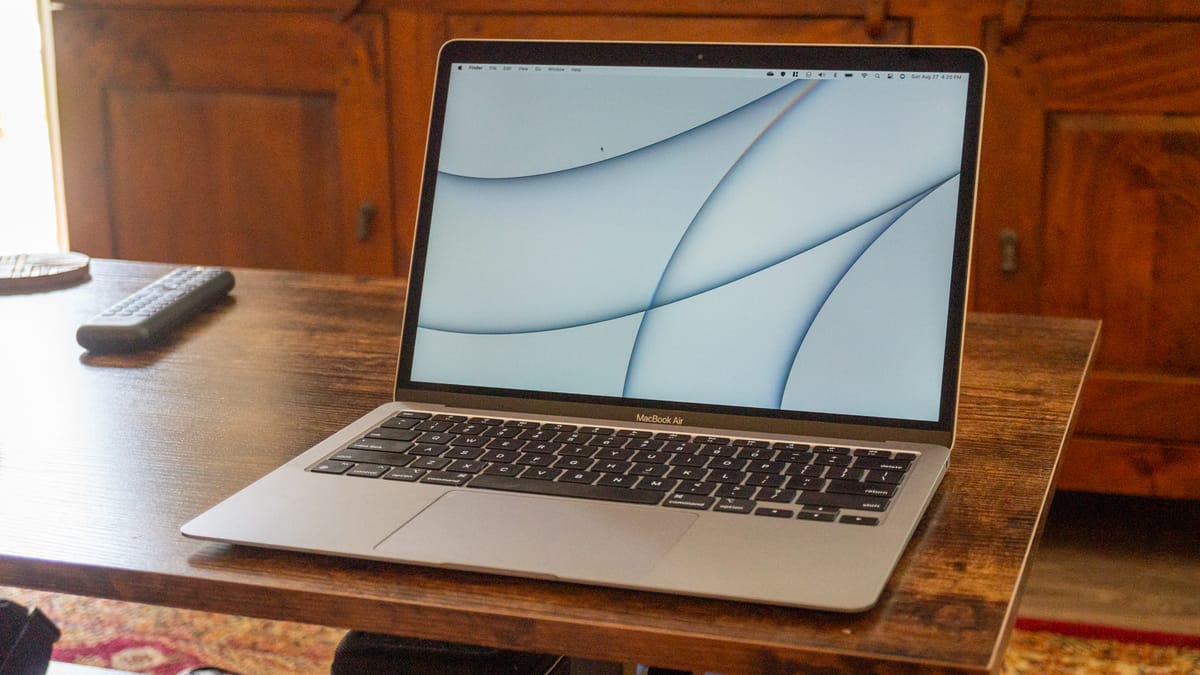- cross-posted to:
- technology@lemmy.zip
- technology
- technology@beehaw.org
- cross-posted to:
- technology@lemmy.zip
- technology
- technology@beehaw.org
2024 might be the breakout year for efficient ARM chips in desktop and laptop PCs.
This is a Qualcomm marketing piece.
And no, the most exciting 2024 tech won’t be a CPU with similar or lower performance to other comparable CPUs on the market, with the added benefit of less software compatibility.
This entire article just to hype up Qualcomm releasing a new CPU? I havent seen any evidence to suggest that this new Qualcomm CPU won’t be trash like all the other ones.
ARM on PC isn’t happening any time soon. They’re not more efficient than x86 CPUs at all.
Here’s a speed comparison between Qualcomm and AMD’s best cpus from last year. Same TDP.
https://www.cpu-monkey.com/en/compare_cpu-qualcomm_snapdragon_microsoft_sq3-vs-amd_ryzen_7_7840u
Here’s Jim Keller, the father of both AMD Ryzen and the Apple M1, saying that ARM is not necessarily more efficient than x86:
https://chipsandcheese.com/2021/07/13/arm-or-x86-isa-doesnt-matter/
The only reason why Apple was able to make a successful ARM CPU was because they control the entire OS and the entire supply chain, and they have super expensive exclusivity contracts with TSMC. (because they literally make 50% of all phones in the world)
AMD’s x86 CPUs are actually faster and more efficient than Apple’s ARM CPUs on the same 5nm process node, but Apple is consistently 2 years ahead when it comes to silicon manufacturing, because of their TSMC deals.
Qualcomm doesn’t have any of that, and there is no way their CPUs are going to be so much better than AMD’s that people are going to be willing to put up with ISA incompatibilities. Windows on ARM has been a flop.
At least servers are more reasonable to see ARM chips, because all the software is open-source and all the major cloud vendors are making their own CPUs.
Nothing against ARM, or alternative ISAs in general, people just don’t understand that x86 vs ARM is not about power efficiency at all, it’s about supply chains and software compatibility.
Here’s a speed comparison between Qualcomm and AMD’s best cpus from last year. Same TDP.
Amd’s chip runs on 28 watts and is built on 4nm, qc’s runs on 7 watts and is built on 5nm. They are not equivalent.
AMD’s x86 CPUs are actually faster and more efficient than Apple’s ARM CPUs on the same 5nm process node, but Apple is consistently 2 years ahead when it comes to silicon manufacturing, because of their TSMC deals.
Comparing amd 7840u pro (4 nm, 28W) with apple m2 pro 10 core (5 nm, 28W), amd is 7% faster in single core and 10% faster in multi core. It’s unclear how it would be if they were on the same node. Feels they’d be the same
I think the QC chip is 28 watts too. They use the same chassis as the Intel chip.
That is a good point that AMD’s node is technically slightly newer, even though they are both 5nm class. TSMC’s N4P is claimed to be up to 5% faster or 10% more power efficient than N5P. So, fair enough, they’re about even.
https://www.tomshardware.com/news/tsmc-announces-n4p-process-a-refined-n4-chip-node
I think chassis choice is just to keep it consistent. Sq3 is apparently based on 8cx gen3 which runs on 7 watts. The site you linked says sq3 has 4 medium and 4 small cores, but judging by how they run at the same frequencies as 8cx’s 4 large and 4 medium cores and the benchmark scores of the two chips being pretty much the same, I think it’s safe to say they’re the same chip. At the very least if sq3 pulled 4x the power to produce the same result Microsoft would just use the 8cx gen3
deleted by creator
I don’t think anyone thinks slapping an ARM processor in a Windows laptop is going to suddenly make them more efficient.
I say most think exactly that.
The SQ3 was a custom design only for Surface tablets, I’m not sure it’s representative of Qualcomm’s future generally-available hardware. Early benchmarks on the Snapdragon Elite are much more promising but TDP and other important details are still missing.
You’re definitely right that software vertical integration is the missing piece. We’re starting to see a little bit of that in the PC ecosystem (e.g. windows using the AI core on newer CPUs/SoCs for live camera and mic effects) but more needs to happen there.
That’s true. I haven’t looked that closely at QC’s most recent chips, just pointing out that they’re usually slower/hotter/more-expensive
It’s good to see competition, but people should manage their expectations. They’re gonna have to be a lot faster/efficient than the AMD 7840u in order to make running ARM worth it on PC.
It’ll be a fight, and in 2025 they’ll have to compete with Zen 5, too.
My X13s with Linux, at 250 nits brightness while browsing via WLAN and playing music from the browser via bluetooth uses 5-8W in total.
You shouldn’t trust TDP numbers. They’re most useful to get a ballpark idea of what size cooler you’ll need for a given chip (and even then, Nactua has their own rating system for matching coolers to chips). AMD, in particular, reinvents their TDP formula regularly and plays with the numbers to get the output they want for comparison purposes.
Anyway, I’d be fine if ARM ends up being only on par with x86. It’s still a way out of the insanity of the x86 architecture and opens up so many more companies who can make chips.
It says it a few times about x86 being decades old…but so is ARM? I dont know whats supposed to be game changing about it.
X86 has an incredible amount of cruft built up to support backwards compatibility all the way back to the 8086. ARM isn’t free of cruft, but it’s nowhere on the same level. Most of that isn’t directly visible to customers, though.
What is visible is that more than three companies can license and manufacture them. The x86 market has one company that owns it, another who licenses it but also owns the 64 bit extensions, and a third one who technically exists but is barely worth talking about. It’s also incredibly difficult to optimize, and the people who know how already work for one of main two companies (arguably only one at this point). Even if you could legally license it as a fourth player, you couldn’t get people who could design an x86 core that’s worth a damn.
Conversely, ARM cores are designed by CS students all the time. That’s the real advantage to end users: far more companies who can produce designs. If one of them fails the way Intel has of late, we’re not stuck with just one other possibility.
I’m guessing you’ve never used an ARM Mac.
They don’t look all that fast on GeekBench (more on that in further down) but in real world usage they are incredibly fast. As in an entry level 13" school homework laptop will have performance on par with a high end gaming PC with a thousand watt PSU.
I don’t have a high end gaming PC to compare, but I do have a mid-range one and I’ve stopped using it… my laptop is so much faster, quieter, cooler, that even though the PC has more games… I just put up with the modest selection (about half the games I own) that run on a Mac. It’s not just gaming either… I’m also able to compile software perfectly fast, I can run docker with a dozen containers open at the same time without breaking a sweat (this is particularly impressive on the Mac version of Docker which uses virtual machines instead of running directly on the host), and stable diffusion generates images in about 20 seconds or so with typical generation settings.
The best thing though is I can do all of that on a tiny battery that lasts almost an entire day under heavy load and multiple days under normal load. I’ve calculated the average power draw with typical use is somewhere around 3 watts for the entire system including the screen. It’s hard to believe, especially considering how fast it is.
On the modest GeekBench score Apple ARM processors have - it’s critical to understand GeekBench is designed to test very short bursts and avoid thermal throttling. Intel’s recent i9 processors, with good cooling, will thermal throttle after about 12 seconds and GeekBench is designed to avoid hitting that number by doing much shorter bursts than that. Apple’s processors not only take far longer to thermal throttle, they also “throttle” by reducing performance to barely lower than full speed.
But even worse than that - one of the ways Apple achieves incredible battery life is they don’t run the processors at high clock rates for short bursts. The CPU starts slow and ramps up to full speed when you keep it under high load. So something quick, like loading a webpage, won’t run at full speed and therefore GeekBench also isn’t running at full speed either.
A third difference, and probably the biggest one, is Apple’s processor has very fast memory and also massive memory caches which are even faster. Again that often doesn’t show up on CPU benchmark because it’s not really measuring compute power. But real world software spends a massive amount of time just reading and writing to memory and those operations are fast on Apple’s ARM processors.
You really can’t trust the benchmarks when you’re comparing completely different processors. You need to try real world usage, and the real world usage difference is game changing. Trust me, when proper fast processors (not just a laptop running with a phone CPU) are available on PCs, everyone will realise Mac users were right - ARM is way better than x86. This isn’t like AMD vs Intel. It’s more like HDD vs SSD.
Haha “entry level school homework Mac” Hahahahaha Sure thing Richy Rich
The Mac I use is a few years old and available secondhand for under $500. You can get the same CPU/GPU in an iPad which is available, brand new, for $600. I think that’s a reasonable price for a school computer.
You can buy a PC running Linux or Windows that stomps that for the same price, new.
Macs are over priced for what you get.
deleted by creator
I work on an ARM Mac, it’s fine. If you’re just doing light work on it, it works great! Like any other similarly priced laptop would.
Under load, or doing work outside what it is tuned for, it doesn’t perform spectacularly.
It’s a fine laptop, the battery life is usually great. But as soon as you need to use the x86 translation layer, performance tanks, battery drains, it’s not a great time.
Things are getting better, and for a light user, It works great, but I’m much more excited about modern x86 laptop processors for the time being.
deleted by creator
they are getting dowvoted because they said macbooks are “entry-level school laptops”, which I find hilarious.
macbooks are a luxury, paying way more for the same specs (with more battery life, I’ll grant you that).
deleted by creator
Personally I down voted once I read that somehow one of these laptops are on par with a high end gaming PC which is simply not true at all.
All apple products I’ve bought have had their performance artifically destroyed by firmware
Not doing that again
Ever
Have fun when this computer breaks on purpose so you buy a new one
This is just a repeat of the same old pro-RISC myths from decades ago. There is very little performance difference between x86 and any RISC based CPU, at least when pertaining to the ISA itself. Apple merely has the advantage of having far more resources available for CPU development than their competitors.
Modern x86 is a CISC outer layer around a RISC inner core. It didn’t hang on this long by ignoring RISC, but by assimilating it. RISC really did change everything, but not by the way everyone thought.
It would be fascinating to see Qualcomm, NVIDIA, AMD, Mediatek, and possibly others all competing to build the best ARM SoCs for windows devices, especially after so many years of Intel stagnating and Apple eating their lunch with their ARM SoCs.
competing to build the best ARM SoCs for windows devices
You mean desktop, and not Windows? Because if anything Windows is becoming a botnet device. I hope linux support is OOB.
Windows arm devices boot with UEFI, so standard ARM UEFI images should work, just like on x86. I would bet drivers should be alright too, since these ARM SoCs will likely be similar to ones used in Linux SBCs and Android devices.
Wake me up when risc-v has performance parity and more software
2024 might be the year I win a million dollars.
I will tell you how to win 2 million if you give me 1
Does anyone else worry that the rise of personal computers using super custom SOCs is going to have negative effects on our abilities to build our own machines?
Ah yes, let’s welcome one device - one operating system myth to the desktops, with people choosing hardware because of software feauture that could be installable. Welcome the expiration date on computers called “years of software support” and welcome overall unfriendlyness for alternative systems.
Performance and efficency is one side of the coin. But let me remind you that Qualcomm (among with Google) is the reason we cannot have lifetime updates for our phones, ROMs build needs to be specific for each model and making a phone with anything but Android is nearly impossible.
I’ll take ARM over x86, but I’ll take AMD/Intel over Qualcomm thousand times more.
Omg the porting of games would be awfull
But one detail that we cannot forget is that with the increase in ARM architecture in PCs and laptops we will probably see an increase in fully locked hardware. We don’t need the expansion of the ARM architecture for PCs if it doesn’t come with hardware and software freedom
How long before indie devs can make their own custom processor chips?
Now? FPGAs have been a thing for decades and are the closest thing I can see to getting custom chips made without massive investments.
Yup. But was thinking more of ultra-small-run ARM or RISC-V processors. Be cool if we ever get there.
It would be cool, but photolithography masks are insanely expensive, and completely independent of run size. So, not happening any time soon. Even when you use old processes above 40nm and share the mask costs between multiple projects, you need 10s to 100s of thousands of dollars.
You can build a risc core using an fpga. Plenty of people have done that.
Performance will probably be an issue.
do you know how a CPU is designed? it’s just crazy hard to study the design of simple RISC CPUs we studied in college. And those were very simple, old processors.
A modern processor with performance that can match modern CPUs is no task for one indie dev, at all.
You need a team of professionals in the field, a huge budget and the technology to manufacture it, which you would probably end outsourcing to one of the big manufacturers anyway because it’s very rare.
So the answer to your question is never, unless you’re expecting low performance CPUs based on FPGAs.
deleted by creator
ow yea 2024 will definitely be the year where AI gets integrated into all those products.
I really hope so… Those x86 architecture chips are killing me.









